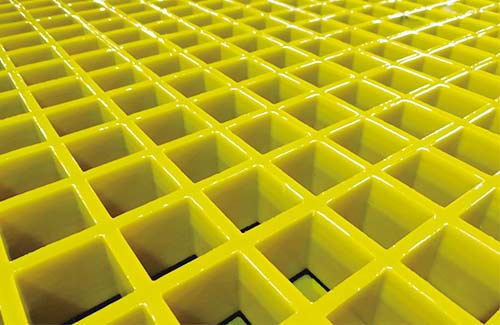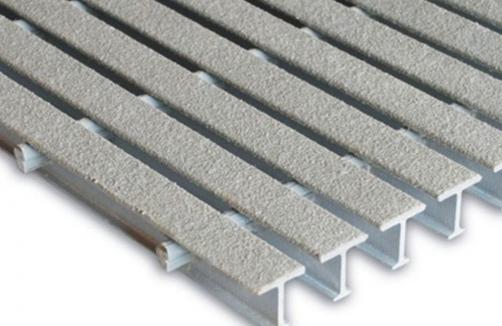Esplorare i vantaggi del sistema di strutture in FRP per l'edilizia moderna
Nel mondo delle costruzioni in continua evoluzione, ingegneri e architetti sono alla continua ricerca di materiali e sistemi innovativi che offrano prestazioni superiori, durata ed economicità. Una di queste soluzioni innovative è il sistema di strutture in polimeri fibrorinforzati (FRP). Ma cosa sono esattamente le strutture in FRP e perché stanno guadagnando terreno nell'edilizia moderna? Approfondiamo l'argomento ed esploriamo i numerosi vantaggi che offrono.
Cosa sono le strutture in FRP?

Le strutture in FRP, note anche come polimeri fibrorinforzati, sono materiali compositi costituiti da una combinazione di fibre - come fibra di carbonio, fibra di vetro o fibra aramidica - e da una matrice polimerica. Questi materiali sono rinomati per l'elevato rapporto forza-peso, la resistenza alla corrosione e la capacità di sopportare condizioni ambientali estreme. A differenza dei materiali da costruzione tradizionali, come l'acciaio o il cemento, gli FRP non arrugginiscono e non si degradano nel tempo, rappresentando la scelta ideale per un'ampia gamma di applicazioni.
Perché le strutture in FRP stanno guadagnando popolarità?
1. Leggero ma resistente
Uno dei principali vantaggi delle strutture in FRP è il loro eccezionale rapporto resistenza-peso. Ciò significa che possono sopportare carichi significativi pur essendo notevolmente più leggere dei materiali tradizionali. Questa caratteristica è particolarmente vantaggiosa nelle applicazioni in cui la riduzione del peso è fondamentale, come nella costruzione di ponti o nell'ingegneria aerospaziale.
2. Resistenza alla corrosione
Un'altra ragione convincente per la crescente adozione di strutture in FRP è la loro intrinseca resistenza alla corrosione. A differenza dell'acciaio, che può arrugginire se esposto a umidità e sostanze chimiche, gli FRP non ne risentono. Questa resistenza si traduce in una maggiore durata e in costi di manutenzione ridotti, rendendole una soluzione economicamente vantaggiosa nel lungo periodo.
3. Flessibilità del design
Le strutture in FRP offrono una flessibilità progettuale senza pari. Questi materiali possono essere modellati in varie forme e dimensioni, consentendo ad architetti e ingegneri di creare strutture innovative ed esteticamente gradevoli. Che si tratti di un ponte curvo o di un'elegante facciata di un edificio, gli FRP possono essere adattati per soddisfare requisiti di progettazione specifici.
4. Benefici ambientali
In un'epoca in cui la sostenibilità è una preoccupazione fondamentale, le strutture in FRP si distinguono per i loro vantaggi ambientali. La produzione di FRP genera meno emissioni rispetto ai materiali tradizionali come acciaio e cemento. Inoltre, gli FRP sono riciclabili, riducendo ulteriormente il loro impatto ambientale.
5. Installazione rapida
I progetti di costruzione hanno spesso scadenze ravvicinate e le strutture in FRP possono contribuire a vincere queste sfide. Grazie alla loro leggerezza, gli FRP possono essere trasportati e installati più rapidamente dei materiali tradizionali. Questo non solo riduce le tempistiche del progetto, ma anche i costi di manodopera.
Rispondere alle domande più comuni
L'FRP è adatto a tutti i progetti di costruzione?
Pur offrendo numerosi vantaggi, le strutture in FRP non sono adatte a tutti i progetti. È necessario considerare fattori quali il budget, le condizioni ambientali e i requisiti strutturali. Tuttavia, per molte applicazioni, soprattutto quelle che richiedono un'elevata forza, resistenza alla corrosione e flessibilità progettuale, gli FRP sono una scelta eccellente.
Le strutture in FRP sono più costose dei materiali tradizionali?
Inizialmente, i materiali FRP possono sembrare più costosi di quelli tradizionali, come l'acciaio o il cemento. Tuttavia, se si considerano i vantaggi a lungo termine, come la riduzione dei costi di manutenzione, la maggiore durata e il risparmio ambientale, gli FRP possono rappresentare una soluzione economicamente vantaggiosa.
Come si comportano le strutture in FRP nelle zone sismiche?
Le strutture in FRP hanno dimostrato prestazioni eccellenti nelle zone sismiche. La loro flessibilità e la capacità di assorbire energia le rendono altamente resistenti ai terremoti, garantendo la sicurezza delle strutture in aree ad alto rischio.
Condividere le conoscenze sulle strutture in FRP
Gli esperti del settore sottolineano spesso il potenziale di trasformazione delle strutture in FRP nell'edilizia moderna. Secondo la dottoressa Emily Carter, un'importante scienziata dei materiali, "gli FRP non sono solo un sostituto dei materiali tradizionali, ma sono un catalizzatore di innovazione. La loro versatilità e le loro prestazioni aprono ad architetti e ingegneri nuove possibilità di creare strutture più sicure, sostenibili ed esteticamente gradevoli".
Conclusione
I vantaggi del sistema di strutture in FRP per le costruzioni moderne sono innegabili. Dalla loro leggerezza e robustezza alla resistenza alla corrosione e alla flessibilità progettuale, gli FRP offrono un'alternativa convincente ai materiali tradizionali. Con la continua evoluzione del settore delle costruzioni, le strutture in FRP sono destinate a svolgere un ruolo fondamentale nella creazione di edifici e infrastrutture più sicuri, sostenibili ed efficienti. Abbracciando questa tecnologia innovativa, possiamo costruire un futuro più luminoso e resistente nel settore delle costruzioni.







